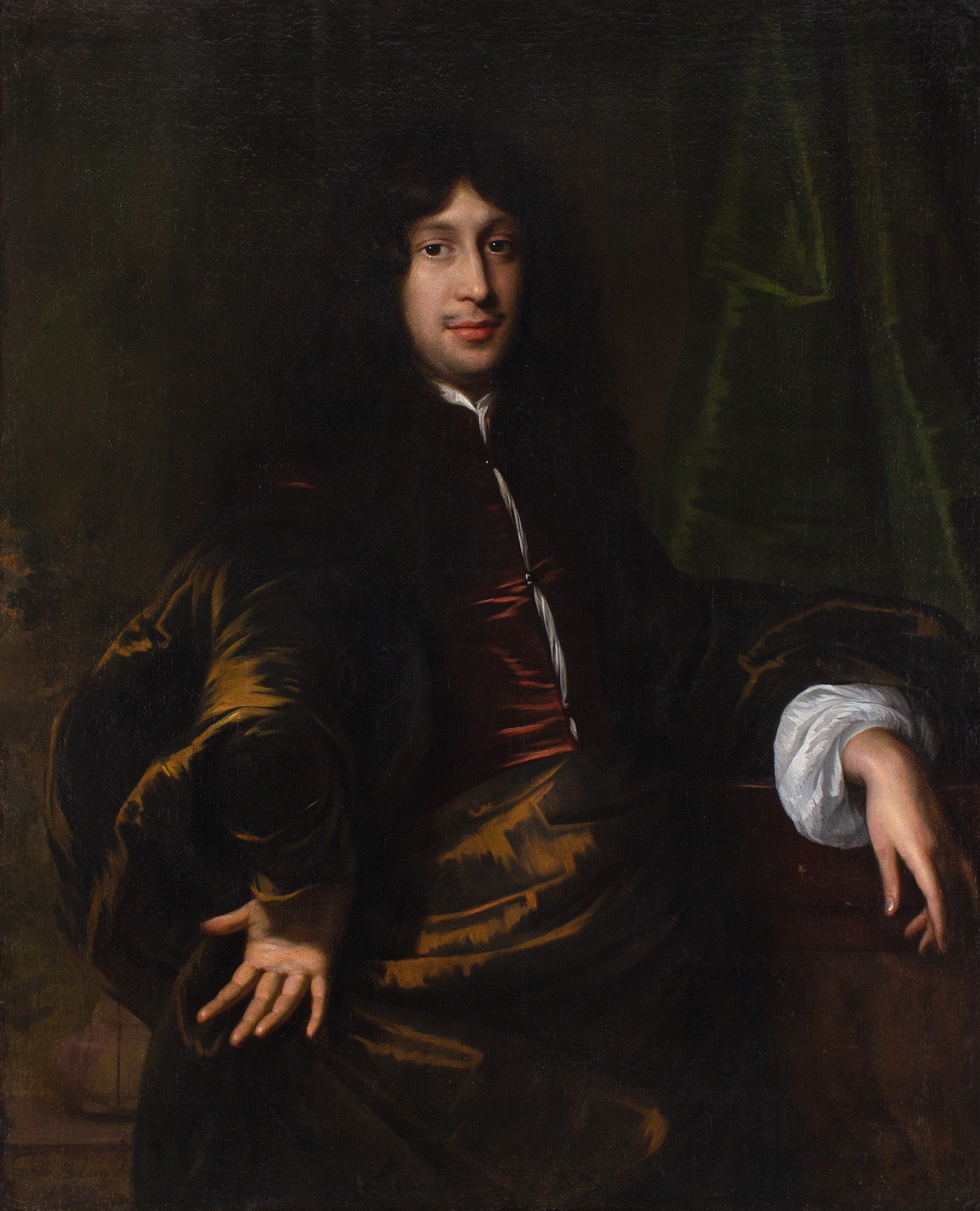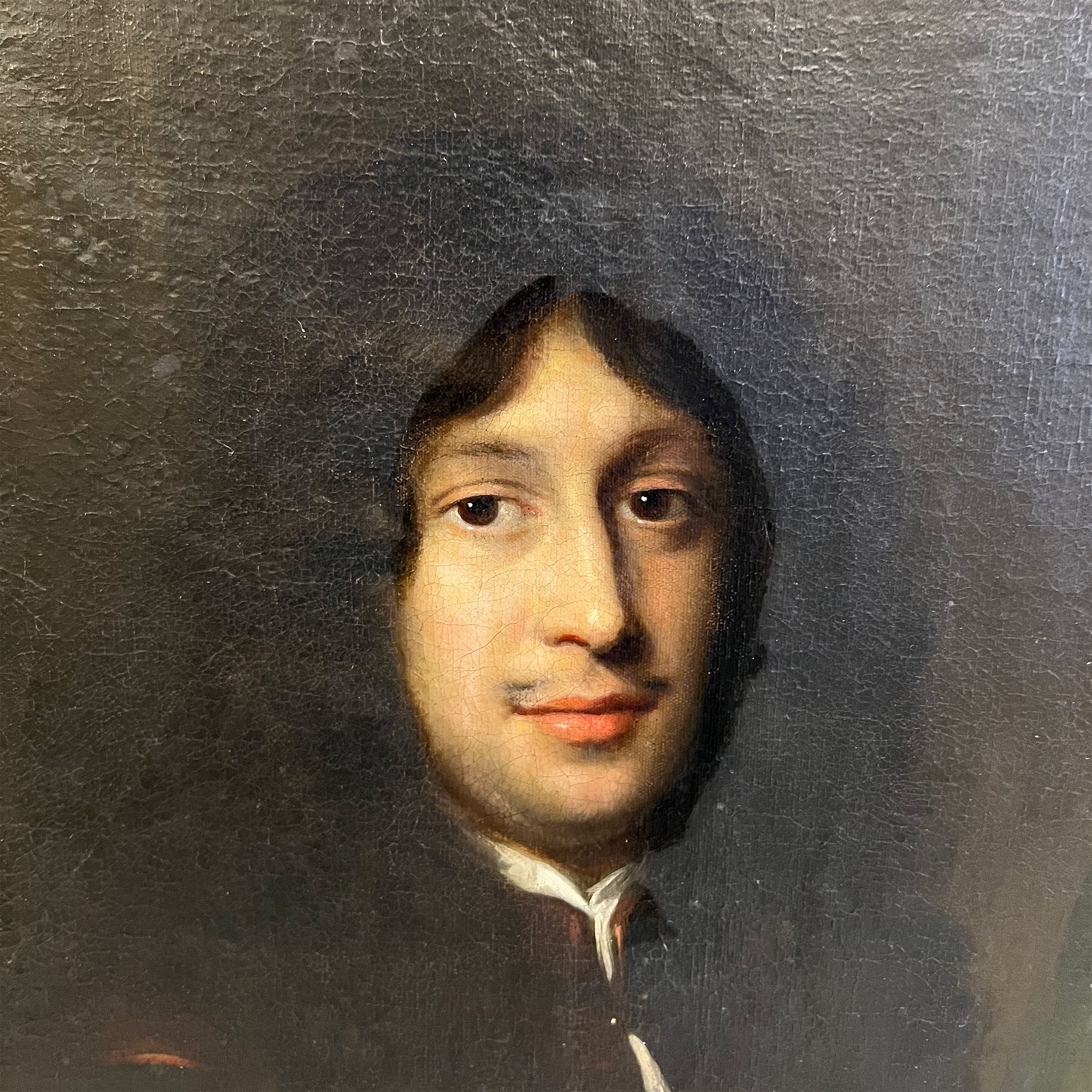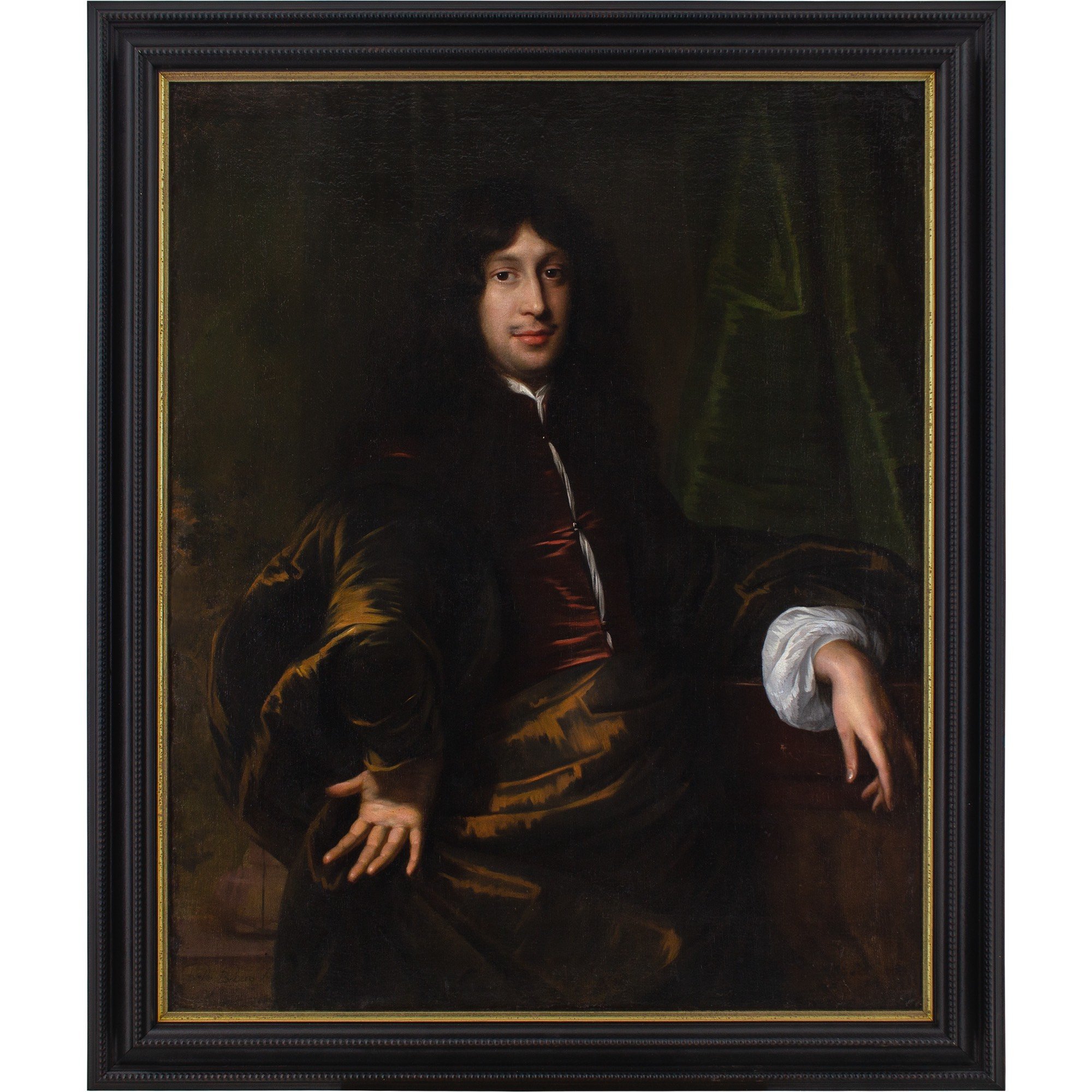
Jan De Baen,
Portrait Of A Gentleman
Case Study
A fine, late 17th-century oil painting by Dutch artist Jan de Baen (1633-1702) depicting a gentleman wearing a sumptuous brown cloak.
Assessment
The painting arrived with the details obscured due to decades of accumulated soot, dirt and tobacco. The varnish had also crystallised in areas.
Approach
In this instance, a simple and efficient surface clean brought back much of the lost vibrancy. A revarnish completed the process.
Result
It now presents in gallery condition with a gentle ‘old master’ glow.




Jan De Baen
(1633-1702)
Jan de Baen was a renowned Dutch Golden Age portraitist who worked predominantly in The Hague for distinguished aristocratic patrons.
Following the loss of his parents, he was raised by his uncle, the magistrate and painter, Hinderk Pyman (or Piemans), who taught him the rudiments of drawing and painting. From here, he moved to the vibrant port city of Amsterdam, where he undertook further tuition with Jacob Adriaensz Backer (1608-1651), a pupil of Rembrandt’s who was well-versed in portraiture.
De Baen was remarkably popular and regarded highly by patrons for his flattering style. He tended to work with several formulaic poses but still, more often than not, managed to encapsulate the character of each sitter. He studied the works of Anthony van Dyck (1599-1641) extensively and sought to inject a sense of dignity into each of his portrayals. His depiction of William III when Prince of Orange (c.1667) hangs in the Chatsworth Room at Hampton Court Palace.
He’s represented in numerous public collections, including at The British Museum and the National Portrait Gallery in London.


